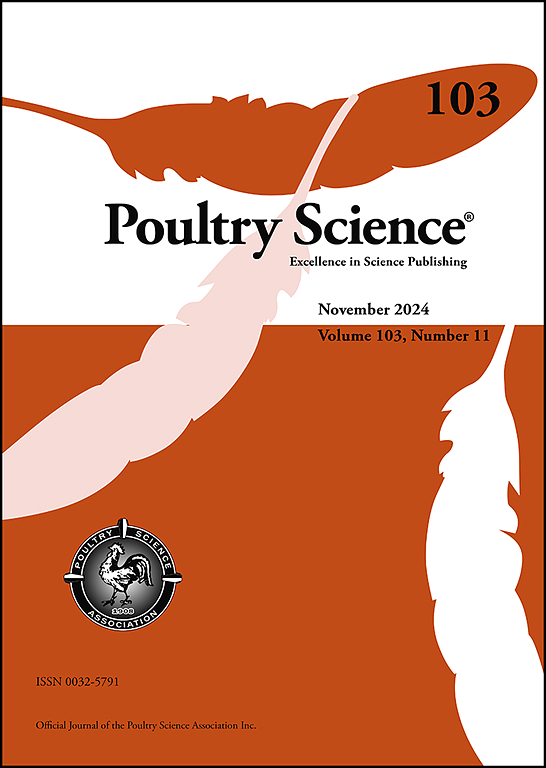Green tea polyphenol epigallocatechin-3-gallate mediates an antioxidant response via Nrf2 pathway in heat-stressed poultry: A review
IF 3.8
1区 农林科学
Q1 AGRICULTURE, DAIRY & ANIMAL SCIENCE
引用次数: 0
Abstract
Heat stress is a critical challenge in the poultry industry. It arises when birds are exposed to elevated ambient temperatures beyond their thermoneutral zone, often exacerbated by high humidity and inadequate ventilation. This condition disrupts the birds' ability to maintain thermal homeostasis, leading to physiological and behavioral changes such as increased panting, reduced feed intake, and elevated water consumption. These responses aim to dissipate heat but often result in energy imbalances, oxidative stress, and impaired immune function. Green tea polyphenols (GTPs) mitigate heat stress in poultry birds by modulating oxidative stress pathways, primarily by scavenging reactive oxygen species (ROS) and enhancing antioxidant defense mechanisms. These pathways play a pivotal role in neutralizing ROS generated during oxidative stress, inflammation, and exposure to electrophilic compounds. This action helps restore cellular balance and enhances overall antioxidant defense mechanisms by converting harmful free radicals into less reactive molecules, such as water and oxygen. Nuclear factor (erythroid-derived 2)-like 2 (Nrf2) plays a significant character in the activation of the enzymatic antioxidants network. It translocates to the nucleus upon activation, binds to antioxidant response elements (AREs) in the promoter regions of target genes, and upregulates the expression of key antioxidant enzymes. Therefore, the regulation of Nrf2 is considered a critical molecular marker in mitigating the effects of heat stress, as its activation enhances the expression of antioxidant and detoxification enzymes, protecting against oxidative damage and inflammation induced by elevated temperatures. This exploratory review summarizes the antioxidant mechanisms and anti-oxidative stress effects of GTPs in mitigating heat stress in poultry. It highlights the cytoprotective molecular basis of epigallocatechin-3-gallate (EGCG), particularly its role in modulating Nrf2-mediated cellular pathways, which enhance antioxidant defense systems and protect against oxidative damage.
求助全文
约1分钟内获得全文
求助全文
来源期刊

Poultry Science
农林科学-奶制品与动物科学
CiteScore
7.60
自引率
15.90%
发文量
0
审稿时长
94 days
期刊介绍:
First self-published in 1921, Poultry Science is an internationally renowned monthly journal, known as the authoritative source for a broad range of poultry information and high-caliber research. The journal plays a pivotal role in the dissemination of preeminent poultry-related knowledge across all disciplines. As of January 2020, Poultry Science will become an Open Access journal with no subscription charges, meaning authors who publish here can make their research immediately, permanently, and freely accessible worldwide while retaining copyright to their work. Papers submitted for publication after October 1, 2019 will be published as Open Access papers.
An international journal, Poultry Science publishes original papers, research notes, symposium papers, and reviews of basic science as applied to poultry. This authoritative source of poultry information is consistently ranked by ISI Impact Factor as one of the top 10 agriculture, dairy and animal science journals to deliver high-caliber research. Currently it is the highest-ranked (by Impact Factor and Eigenfactor) journal dedicated to publishing poultry research. Subject areas include breeding, genetics, education, production, management, environment, health, behavior, welfare, immunology, molecular biology, metabolism, nutrition, physiology, reproduction, processing, and products.
 求助内容:
求助内容: 应助结果提醒方式:
应助结果提醒方式:


